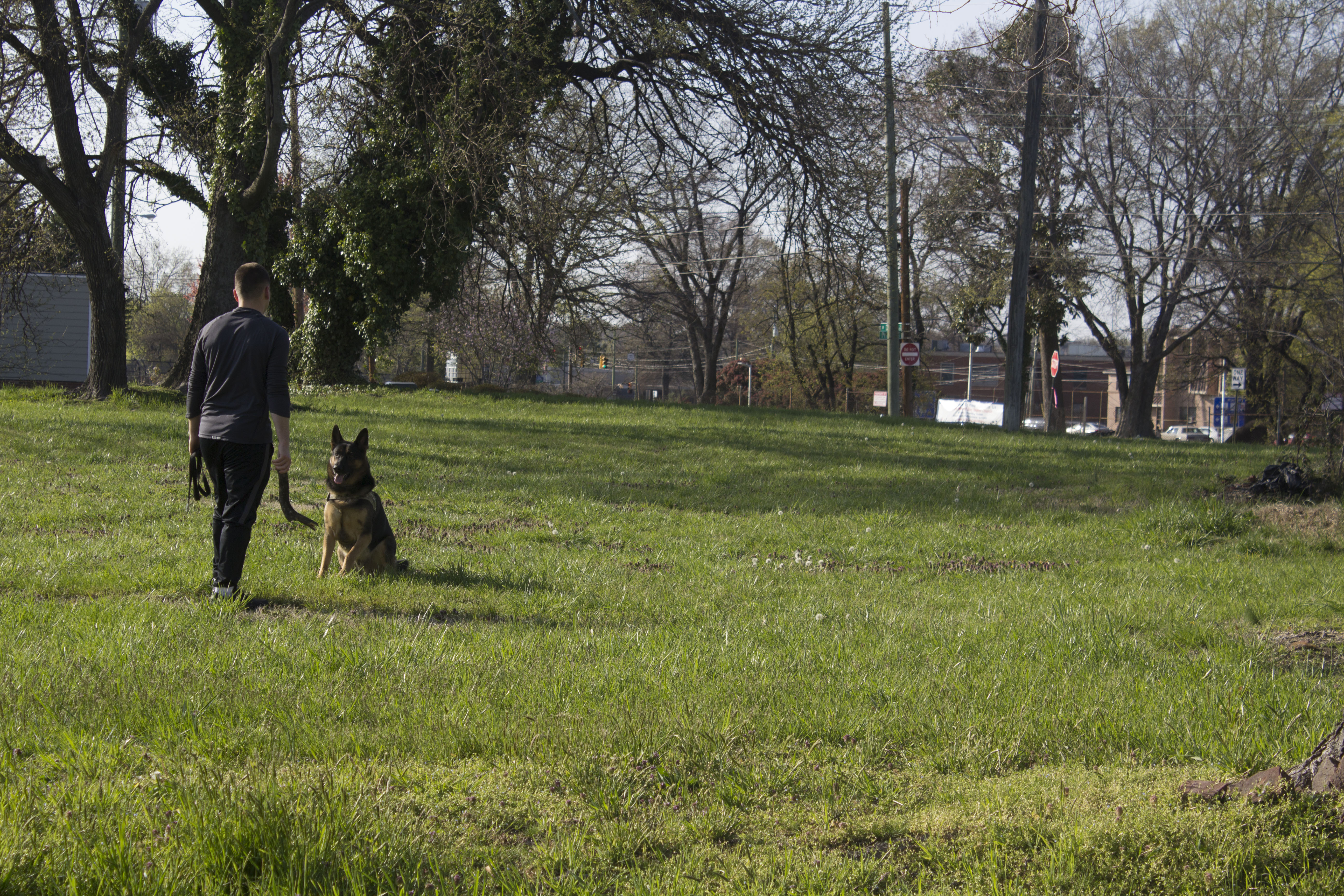An urban garden borders I-95 in Jackson Ward in Richmond, VA (Video by Nidhi Sharma)
by Nidhi Sharma
Jackson Ward is split in two by Interstate 95, the product of city planning in the 1950s that disrupted what was once the cultural and economic hub of the black South. Today, the once thriving neighborhood has evolved into two fragments of a whole – a thriving community centered on Broad Street on one side, and a distinct grouping of government housing projects on the other: Gilpin Court.
The forced estrangement is evident even in the landscape. Flourishing Jackson Ward boasts manicured front lawns and pruned bushes. Flowering trees line the streets, bursts of color are on display in porch-side pots. As I walk down the sidewalks, I imagine self-satisfied residents swapping gardening tips with their neighbors.
On the other side of the highway, Gilpin Court resident Lee Basin is quick to reassure me of his neighborhood’s equivalent beauty.
“Look all around you, there’s green spaces everywhere!” he says.
Minutes earlier, I had stood in a field of weeds under the warm sun, surrounding by the vapors of untrimmed grass and the stubborn smell of a barbeque, somewhere in the distance. There was the blue, clear sky, partially obscured by a set of drooping power lines and a crumbling building. Litter crunched underneath my feet.
The same field cropped up in dozens of other locations throughout Gilpin Court. There was a feeling of melancholy there. This place had once been beautiful. But like the lots strewn between decrepit homes and deserted churches, Gilpin Court had been misplaced somehow.
Greenery now exists only in glimpses between what has been abandoned. Basin picnics with his grandchildren in the empty plots of land between vacant schools and vacant homes.
Back on the other side of the highway, plans of an urban garden at the opening to Gilpin Court were made in 2016. The proposal has since been abandoned, but the garden would have been situated somewhere between Gilpin Court and Jackson Ward, as a gateway into both communities on Chamberlayne Ave.
“I think it’s a great idea,” Marie Jones, an employee at the Black History Museum, said. “Gardening promotes exercise, it promotes healthy eating and an urban garden in the area would be a great place for the community to gather. Some of the kids over at Gilpin Court have almost no experience with gardens. Building something like this would be incredibly valuable.”
Nautical Jordan, a 19-year-old who lives with her family in the area, looked confused when I asked her about the prospect of an urban garden near her home.
I’d definitely look around if there was one, she said. She smiled at me, and I thought about all the things a teenager could get up to in a park, all the shenanigans she was missing out on. I wanted that for her.
Not everyone, however, was without reservations.
When asked about the prospect of a local urban garden, Jackson Ward resident Dennisa Booth seemed hesitant.
“It could be a really positive thing for the community,” she said. “But there’s a lot of crime that comes from the other side. We’ve had break-ins on this street. I have a security system in my house.”
The other side, for Booth, is unmistakably Gilpin Court.
“I’d be kind of worried about them coming over and possibly stealing the crops,” she said.
In Gilpin Court, families in the projects bask in the sunshine outside their homes. They sit curved over their stoops, reaching for the bits of nature available to them.
It’s true that many in Gilpin Court can’t enjoy nature as the privileged do. Hidden underneath the segregation of the landscape, however, are certain assumptions. Perhaps some believe that poor, black people don’t know how to enjoy nature as well as they do.
Evidently, race and income can creep over from politics into even the trees and the open sky.


